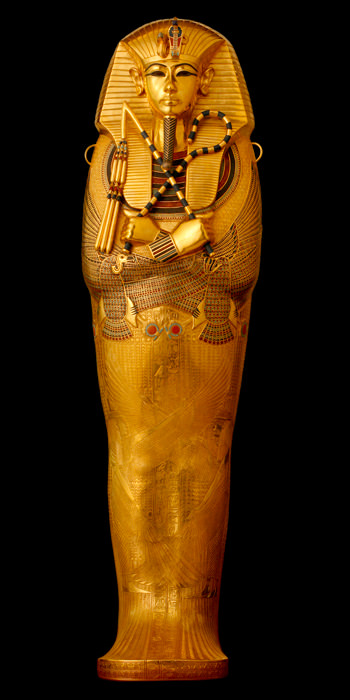
Tutankhamun is one of the most fascinating and mysterious kings in Egyptian history. According to recent research, he was probably a son of Akhenaten, though the identity of his mother is still unknown today, however many historians presume it would have been Akhenaten's famous main wife, Nefertiti.
Tutankhamun ascended to the throne as a child at the age of seven and had to reign in one of the most difficult periods of Egyptian history. His father, Akhenaten, had banned the old religious cults and only allowed a single deity to be worshiped in Egypt, a ruling that caused great social upheaval in the land of the Nile. And even though it was Tutankhamun who managed to restore the country to stability, later kings still erased his name from statues and inscriptions in order to wipe Tutankhamun, the son of the heretic king, from the memory of future generations.
The young pharaoh died at the age of 19 in circumstances that are not especially clear. His tomb in the Valley of the Kings lay forgotten for three millennia until Howard Carter discovered it in November 1922. With this find, the world was given back a piece of cultural heritage of inestimable value. A king, whose fate was so nearly one of complete obscurity was now reborn as the most famous of them all.
An Egyptian pharaoh who died more than 3,300 years ago immediately became a global media sensation, and the golden mask of the young Tutankhamun remains one of the most famous icons of our modern world.